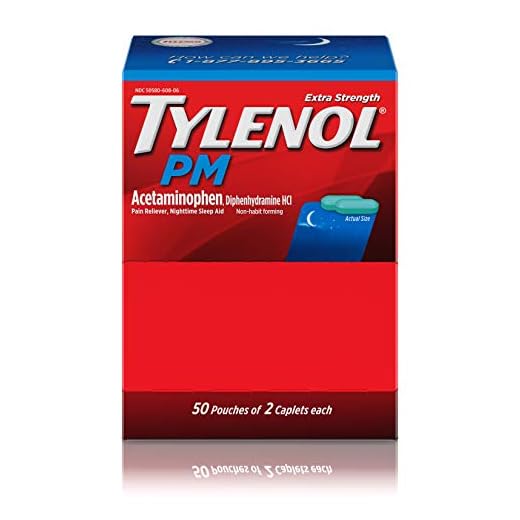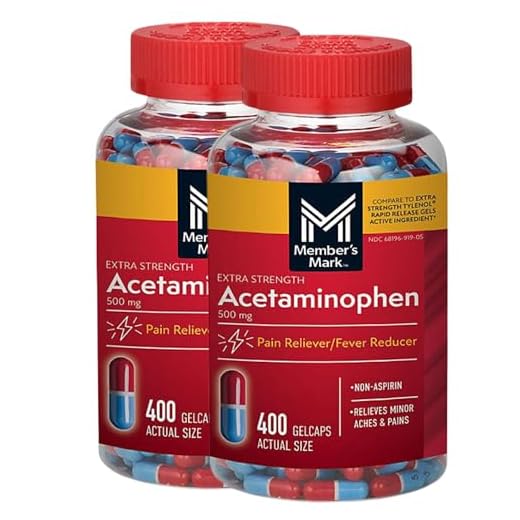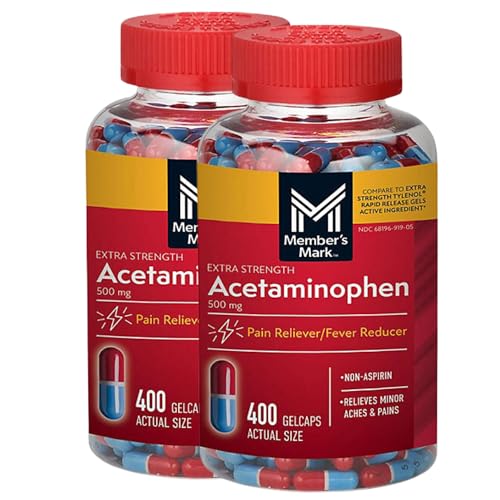





Immediate guidance: Solid doses (tablets, caplets, capsules) are permitted through security and may be stowed either in hand baggage or checked baggage, but store a supply for immediate needs in carry-on to avoid disruption if checked bags are delayed or lost. Oral liquids fall under the 100 ml / 3.4 fl oz cabin rule – bottles exceeding that volume belong in checked baggage or must be divided into compliant containers for cabin carriage.
Packing recommendations: Keep all products in original packaging with manufacturer labels showing the active ingredient name (acetaminophen), strength (mg per unit or mg/5 ml for syrups) and expiry date. Include the patient information leaflet and, when applicable, a printed prescription or clinician’s letter in English that states the medical necessity and dose regimen.
Quantity and documentation: Bring an amount corresponding to trip length plus a small buffer (common practice: trip duration + 3–7 days). Transporting unusually large quantities may prompt inspection or seizure under customs rules; if carrying more than a one-month supply, carry supporting medical documentation to demonstrate personal use.
Destination and airline checks: Regulations differ by country and carrier. Verify the destination country’s prohibited/import-controlled medicines list (examples: some Gulf, Asian and Oceania states enforce strict controls) and read the specific airline’s medication policy before departure. Declare medicines on arrival or at security when requested by officials.
Storage and spill prevention: Pack liquid bottles in sealed plastic bags and cushion blister packs to prevent crushing. Avoid exposure to extreme heat in checked compartments; most solid formulations remain stable at room temperature, but prolonged high temperatures can degrade certain liquid syrups.
Practical checklist: original packaging and leaflet; dose and active ingredient clearly visible; prescription or clinician’s note for large supplies; solids in carry-on for immediate access; liquids >100 ml placed in checked baggage or split into cabin-compliant containers.
Are acetaminophen tablets permitted in checked baggage by airlines and airport security?
Short answer: Solid acetaminophen tablets that contain no controlled substances are generally allowed in checked baggage by airlines and airport security, but best practice is to keep them in original packaging, carry proof of prescription or medical necessity when available, and verify destination-specific rules for ingredients such as codeine or pseudoephedrine.
Key operational details: Transportation security authorities (e.g., TSA, CATSA, EASA-aligned agencies) treat solid oral medications as permitted items in both checked and carry-on bags. Tablets are not subject to the 3.4 oz liquid rule. Airlines normally do not list OTC tablets among prohibited items in hold compartments, yet responsibility for declaration and import rules rests with customs and national drug regulators at arrival.
Packing and documentation checklist for placing tablets in checked bags:
– Leave tablets in the original labelled container showing drug name, dosage and manufacturer; photocopy or photograph of prescription/doctor’s note recommended.
– Limit quantity to a reasonable personal-use amount (commonly interpreted as a 30–90 day supply); larger quantities may trigger customs queries or require import permits.
– Seal containers in a zip-top bag and place inside a rigid compartment or small box to prevent crushing and inspection spillage.
– If the product contains codeine, tramadol, pseudoephedrine or other regulated actives, obtain a formal prescription and check whether an import licence or prior approval is required for the destination country.
Destination and airline variances to check before travel:
– Several countries enforce strict controls on opioid-containing and certain stimulant-containing formulations (example jurisdictions frequently cited: UAE, Singapore, Indonesia, some Southeast Asian nations). Plain acetaminophen without controlled additives is normally acceptable; combinations may be prohibited or require paperwork.
– Airlines may require advance notification for large medical supplies; low-cost carriers sometimes have baggage-item restrictions that affect how medications are stowed.
Risk-management recommendations:
– Prefer transporting essential medication in carry-on to avoid loss, baggage delay, temperature extremes and easier access during flight, but if stored in checked baggage ensure documentation is accessible (photo backup in phone/cloud).
– Before departure consult: the airline’s baggage/medical pages, the destination country’s customs or health ministry site, and the embassy or consulate for controlled-substance lists and permit requirements.
How to pack acetaminophen tablets, liquids and blister packs for checked baggage
Store tablets and blister strips in original manufacturer packaging with pharmacy or manufacturer labels visible; place the sealed packet or bottle inside a clear resealable plastic bag to protect against moisture and to simplify security inspection.
For blister packs: keep strips flat, avoid folding or stacking under heavy items, and insert between layers of clothing or inside a small rigid case to prevent punctures and crushing during handling.
For liquid formulations: transfer to the original labelled bottle when possible; if decanting is necessary, use a pharmaceutical-grade leakproof container, cap with tape, double-bag inside a sealed plastic pouch and include an absorbent pad. Temperatures in the aircraft cargo compartment can fall below freezing; insulate temperature-sensitive suspensions with a neoprene sleeve or wrap in garments to reduce risk of separation or freezing.
Pack medications centrally within checked baggage surrounded by soft items (clothes, towels) to cushion against impact; place heavier objects away from medication to prevent crushing. For extra protection, place the sealed medication pouch inside a small hard-sided container or pill box before embedding it in clothing.
Include a printed copy of the prescription or physician’s note showing active ingredient, dose and prescribed traveller name; for international flights add a translated copy if the original is not in English. If staff inspection occurs, original packaging plus documentation speeds verification – keep a dose or two in cabin baggage for in-flight needs and reference.
Confirm airline and destination country regulations for medicinal liquids and controlled quantities prior to departure; when clarification about ingredients and pregnancy-related guidance is required, consult can pregnant women have red wine vinegar.
Quantity limits for acetaminophen in checked baggage and when to carry a prescription
Carry no more than a three-month personal supply of acetaminophen in checked baggage; larger amounts or formulations containing controlled ingredients require a valid prescription or medical certificate.
Recommended maximum amounts
- Three-month personal supply is the practical threshold most customs authorities accept; this typically equates to about 60–100 tablets of 500 mg depending on dosing.
- Bulk quantities (multiple unopened packages or several hundred tablets) may be classified as commercial import and can trigger seizure, fines or refusal of entry.
- Combination products with opioids (for example codeine-containing analgesics) or other controlled substances are subject to stricter limits and frequently need prior authorization.
- Liquid analgesic formulations placed in checked baggage are not restricted by cabin 100 ml limits, but import controls at the destination can still apply.
When to carry a prescription or supporting documents
- Bring a prescription or doctor’s letter when transporting: amounts greater than a three-month supply; opioid-containing or otherwise controlled formulations; injectable or sterile preparations.
- Required documentation: traveller’s full name matching passport, generic drug name (acetaminophen), strength and dosage, prescribed quantity, prescriber’s name, contact details and signature, and date.
- Keep medication in original packaging with pharmacy labels where possible; provide translated copies of key documents if the destination language is different from English.
- Declare quantities that exceed personal-use thresholds at arrival customs and present prescriptions proactively to avoid seizure or penalties.
- When uncertainty exists, consult the destination country’s embassy or customs website before travel and retain both printed and electronic copies of prescriptions and medical letters.
Special screening issues for powdered, effervescent or liquid acetaminophen in checked baggage
Declare powdered, effervescent or liquid acetaminophen at security and pack in original, clearly labeled containers to reduce the chance of secondary inspection and confiscation.
Loose powders frequently trigger explosive-powder alarms on X-ray and may be subject to swab sampling for trace detection; keep powders in factory-sealed sachets or screw-top jars, avoid decanting into unlabeled bags, and place a printed ingredient label and purchase receipt inside the same compartment.
Effervescent formulations can generate gas or foam if exposed to moisture or pressure changes; place tablets in vacuum-sealed pouches or rigid containers with desiccant packets, keep blister packs intact where possible, and cushion containers to prevent crushing that could accelerate effervescence during transit.
Liquid forms are vulnerable to pressure-related leaks and will draw extra scrutiny if bottles are unlabeled or show residue; use heat-shrink tamper bands or manufacturer caps, wrap bottles in absorbent material, double-bag with a heavy-duty resealable bag, and place them toward the bag’s center to reduce impact and puncture risk.
Unlabeled or undocumented medication has a higher probability of being retained; include a printed product leaflet, purchase invoice or prescription inside the same pocket, photograph packaging and batch numbers before travel, and be prepared for security staff to open containers for inspection.
Security authorities may perform on-site chemical analysis or send samples for laboratory testing, which can delay retrieval. Keep a reserve supply in carry documents when possible, and retain proof of purchase to accelerate return or replacement procedures if items are seized.
Avoid packing medication next to dense or metallic gear that obscures X-ray images; accessories such as best umbrella holder for golf trolley and best umbrella australiatravel and tourism often create clutter that increases the likelihood of manual inspection.
Consult the departure and arrival airport security pages and the airline’s medical rules for country-specific powder and liquid screening procedures before travel.
When to keep acetaminophen in carry-on for in‑flight needs or lost/damaged checked baggage
Keep acetaminophen in carry-on for flights where in-flight relief might be required or retrieval of checked baggage could be delayed–carry an accessible supply rather than relying solely on checked baggage.
Carry-on storage is advisable for: flights longer than ~3–4 hours; overnight or red-eye services; itineraries with multiple connections or known high mishandling rates; travelers with chronic pain, recent dental/surgical procedures or frequent migraines; infants and small children who may require dosing during flight; and trips to destinations where the specific formulation or brand is unavailable.
Pack blister packs or labelled bottles in original packaging inside an outer pocket of the cabin bag for rapid access and inspection. Include a brief dosing note (drug name as printed on packaging, mg per tablet, usual interval) and, when prescribed, a copy of the prescription or physician letter to avoid delays at security or during a medical event on board.
For liquid or gel formulations, follow cabin liquid rules: quantities above standard security limits are commonly permitted for documented medical need but must be declared at the checkpoint and may undergo secondary screening. Keep documentation ready (prescription, physician note or pharmacy label) to present to security staff.
To mitigate checked-bag loss or damage, maintain at least a 24–48 hour supply in the carry-on and keep receipts or prescription copies for possible reimbursement claims. If checked baggage is delayed, contact the airline’s baggage service desk immediately and obtain a written delay report; purchase replacements locally only after obtaining the airline’s guidance on reimbursement procedures and preserve all receipts.







